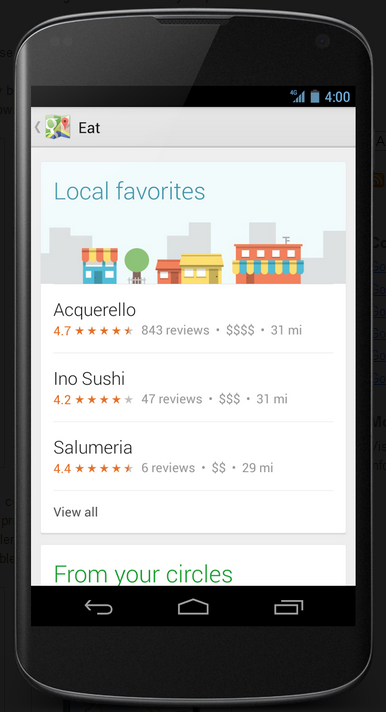Google Maps, Offers and the big wearable technology picture

Google rolled out a new Google Maps app for Android smartphones and tablets with plans to update Apple's iOS later. Aside from the user interface updates and improved navigation tools the linchpin may become the intersection of commerce, maps and wearable technologies such as Google Glass.
First, the new Maps app features the following:
- An Explore feature to find Google cards with places to eat, drink and shop.
- Better navigation tools to avoid traffic.
- Zagats, reviews and offers.

But the biggest win---for Google's ad revenue at least---is integrating Offers with Google Maps. Coupons and deals will now appear on maps next to locations such as Macy's or Toys R Us.
Aside from the obvious targets such as Yelp and Groupon, Google may also be seeding Maps for better usage for wearable technologies such as Google Glass. Consider that Google is making offline maps available by entering OK Maps into a search box. That command sounds a lot like Google Glass.
If you look at technologies such as Glass and driverless cars, it's obvious that Google's maps will be critical. By layering things like Offers, Google's ads will become more embedded with consumer lives.
In a research note handicapping Google Glass, Piper Jaffray analyst Gene Munster estimated that Google could sell 1 million to 2 million Glass units through 2014 (2 million at $500 and 1 million at $700). Munster said that Google could license Glass to eyewear makers, but ads will be the real win. Munster noted:
While Glass lacks ads currently, we believe it is inevitable that eventually ads are included as part of the experience. We would expect ads on Glass to be intermittently displayed as users swipe through information on the interface and potentially in search/navigation results. We believe the advertising will most likely be an extension of what advertisers do on traditional mobile channels with occasional one-off Glass specific efforts.
At some point, Google Maps and Offers would know where a person with wearable tech is and deliver coupons to a favorite restaurant. If Munster is right and wearable tech ultimately replaces smartphones, Google is seeding its commerce model for any device outcome.